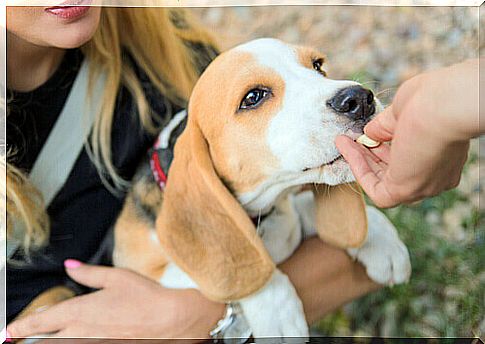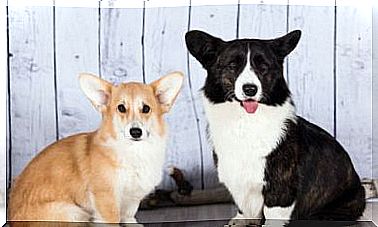Xylitol, A Poison For Dogs

You may be tempted to give your dog some of your favorite treats, or you’d prefer to brush his teeth with the same toothpaste you use. However, these are practices that can be very harmful to your pet, as xylitol is one of the most poisonous substances for dogs.
Now, you might be asking yourself: what is xylitol? And most importantly: What does this have to do with my dog’s health? We will answer these questions below:
What is Xylitol?
Basically, xylitol is a sugar alcohol that is usually used as a sugar substitute. It can be found in a large amount of fruits and cereals in nature, for example, in berries and corn, and it can even be found in the bark of some trees.
For the commercial production of xylitol, extraction is mainly made from the fiber of corn, birch and other plant materials.
As a final product, xylitol has the appearance of a white powder that looks like sugar. In many countries its use has been approved for oral care products, pharmaceuticals and as a food additive.
Some of the products that may contain xylitol are sugar-free gum, peppermint lozenges, many baked goods, sweetened syrups (for example, for coughs), chewable vitamins for children, mouthwashes, and toothpastes, just to name a few.
Its use has been increased due to the sweetening capacity of sucrose, but with only a third of the calories. It is also low in carbohydrates and does not raise blood sugar levels. Therefore, it is very important to keep these products tightly closed and out of reach of your pets.

Why is xylitol bad for my dog?
Although xylitol consumption is not harmful to humans, it is highly toxic to dogs. Even in small doses, xylitol can cause low blood sugar levels in the dog, liver failure, among other problems.
In both humans and dogs, the sugar level is controlled through the pancreas, which releases insulin for this purpose.
It has been proven that, in non-primate species, consumption of xylitol, even in small amounts, stimulates the pancreas to release insulin, which results in a rapid decrease in blood sugar levels.
Depending on the size of the dog, and the amount consumed, this hypoglycemia may appear between ten and sixty minutes after having ingested the product, and may cause permanent damage and even death to the animal.
How toxic is xylitol to my dog?
The reported dose is 100 milligrams for every kilogram of your dog’s weight. Therefore, (although this varies enormously for each brand of product), three sugarless gums can cause severe poisoning in a medium-sized dog, even death.
In general, a high consumption of xylitol will cause liver failure when higher than 225 mg. If this happens, you must take your pet to the vet immediately.
That’s why it ‘s ideal for dogs to avoid all kinds of human treats, including baked goods, unless you know exactly the class of ingredients with which the products were prepared.

alarm symptoms
The symptoms of xylitol poisoning correspond to the same as those of poisoning, so dogs may show the following symptoms:
- Weakness
- Tiredness
- vomiting
- difficulty walking
- Difficulty staying upright
- tremors
- Convulsions
If you notice any of these symptoms in your dog, you should take him to the vet right away. Likewise, if you can identify the substance that the dog consumed, it would be of great help. Remember that we should not administer anything to our dog, nor induce him to vomit, because in case of hypoglycemia this would only worsen his condition.
Although there is no specific treatment for xylitol poisoning, it is treated with fluids, protective liver medications, and sugar supplements to restore normal blood levels.








